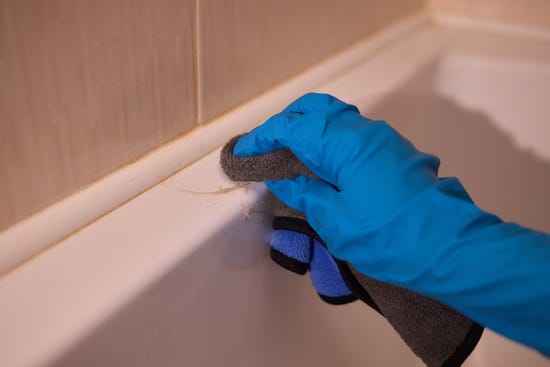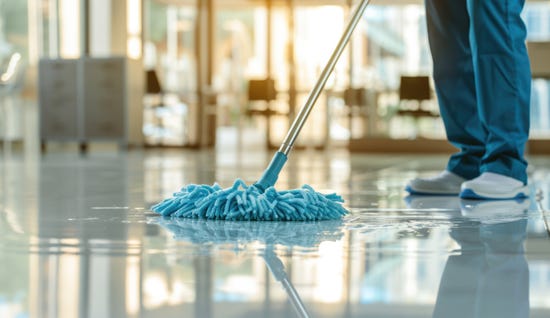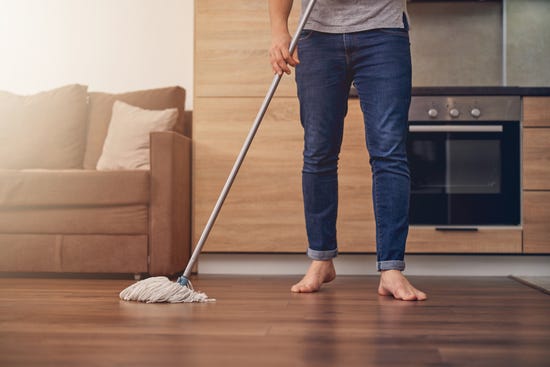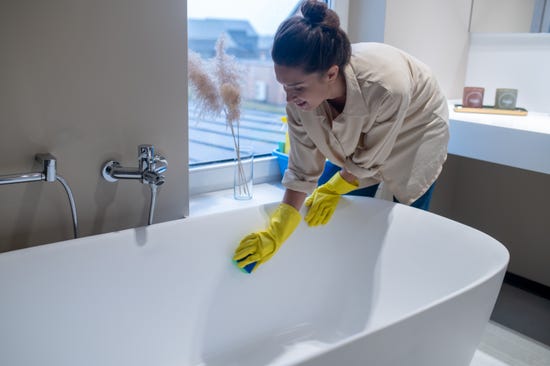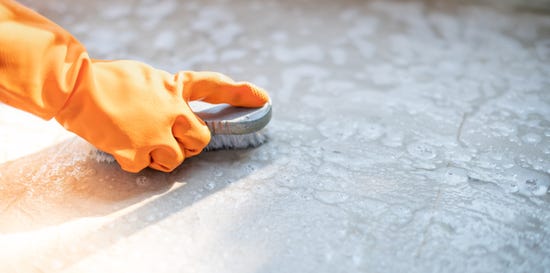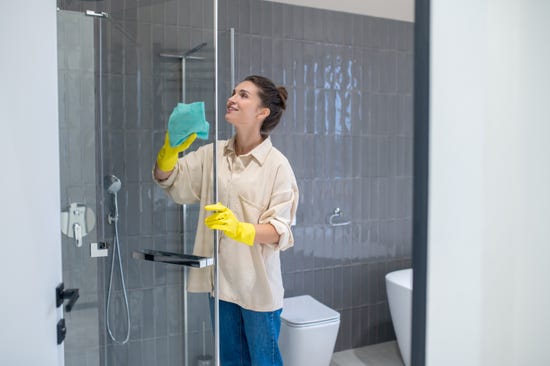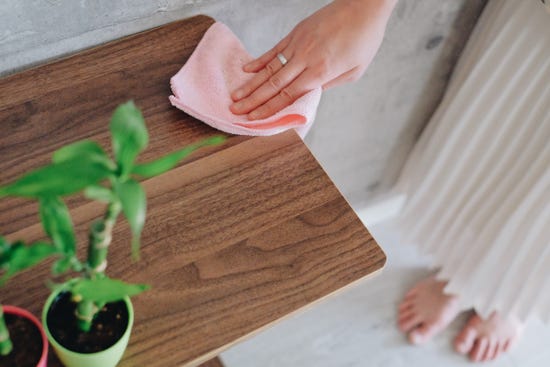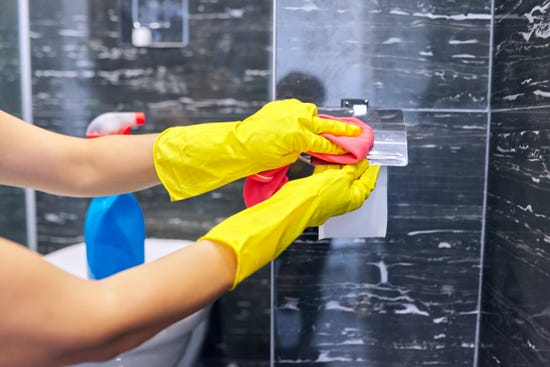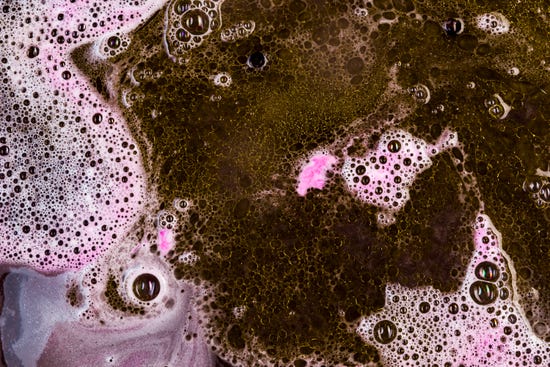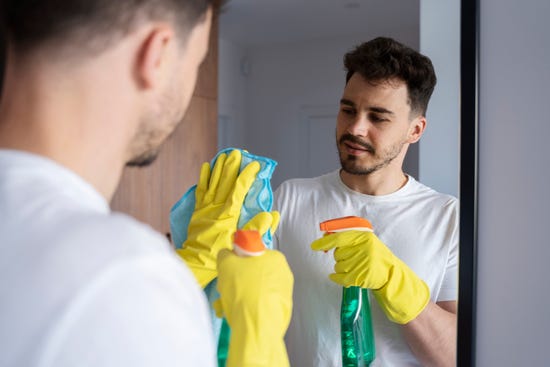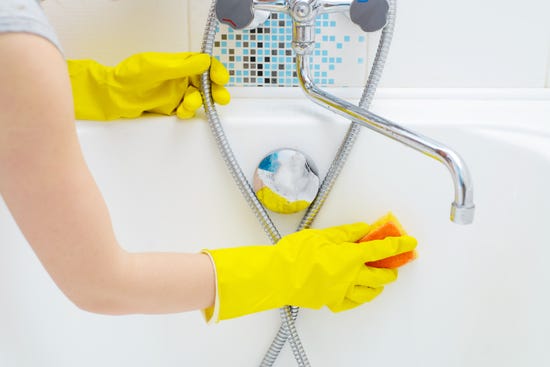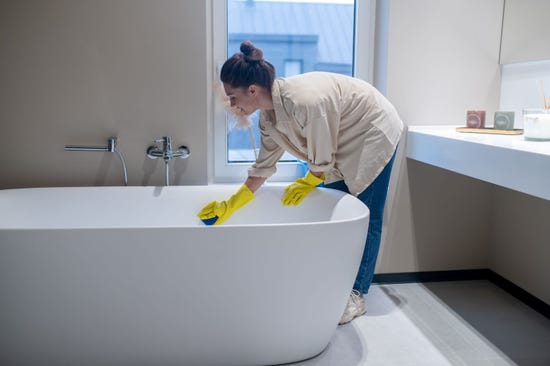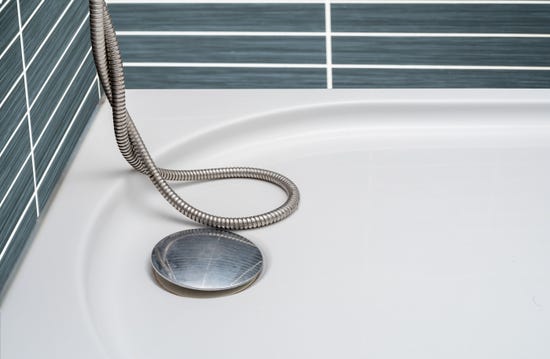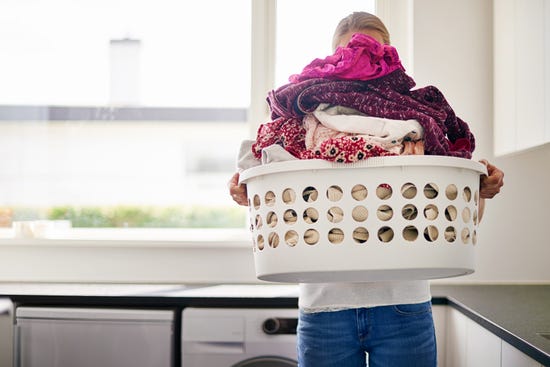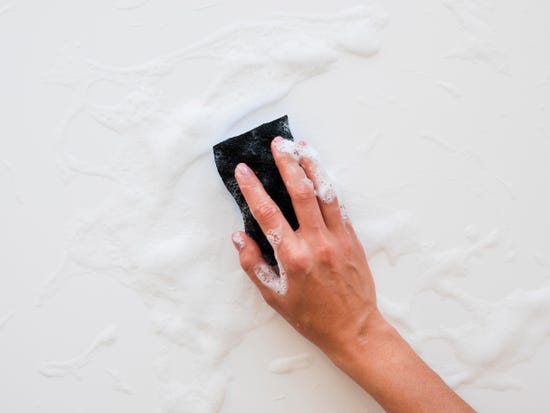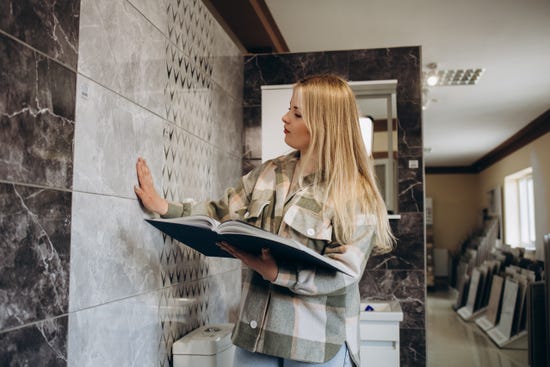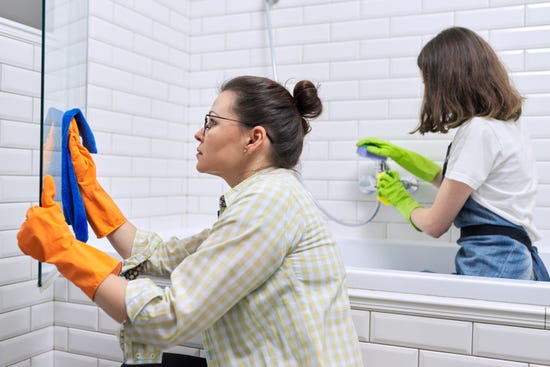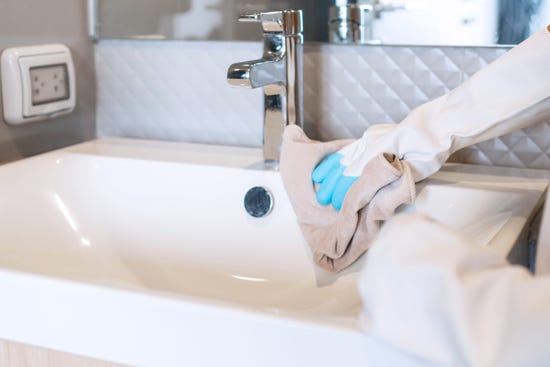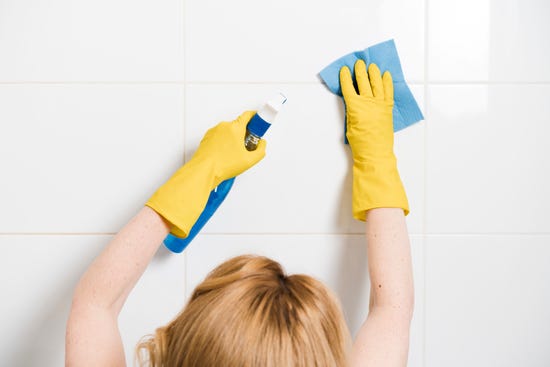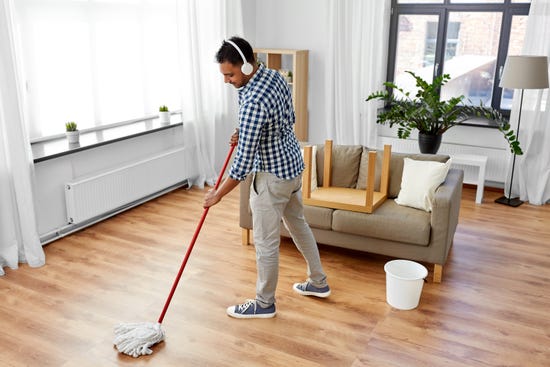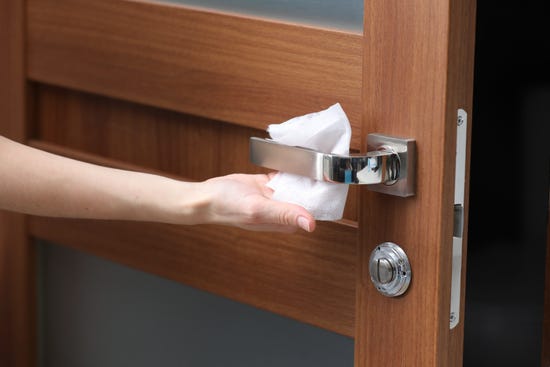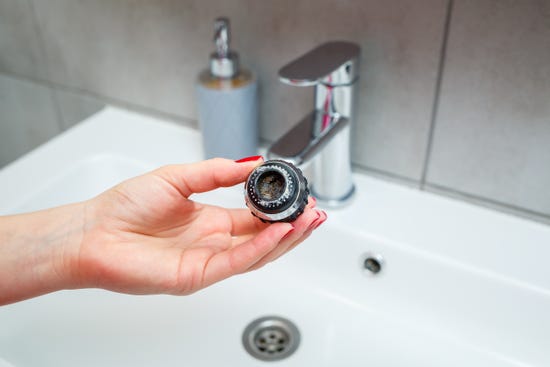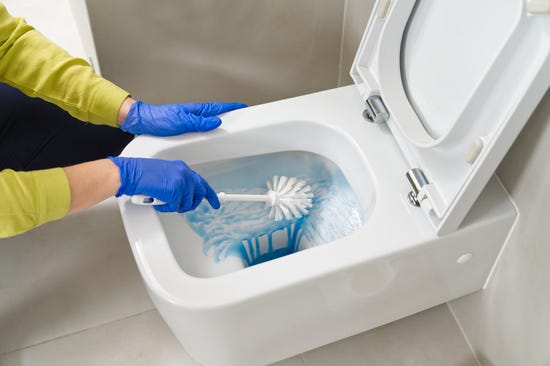
How to Remove Limescale from Bathroom for a Fresh, Clean Space
How to Remove Limescale from Bathroom for a Fresh, Clean Space
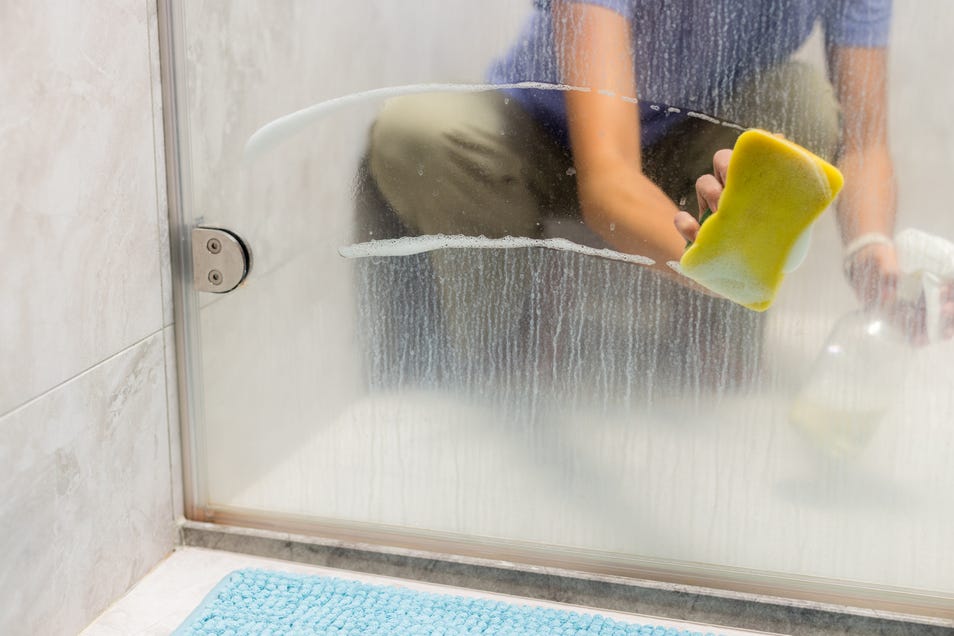
Limescale build-up is an unfortunate by-product of moisture, especially in bathrooms where hard water is present. If left and neglected for a long time, it looks unsightly and unhygienic, resulting in stubborn chalky stains that might be white, pink, or reddish brown.
Yet, this bathroom issue can be easily identified and resolved without the need for costly procedures. That's right—simply use one of the best ways to remove limescale, such as Lysol® Bathroom Cleaners, which kills 99.99% of viruses and bacteria, leaving your surfaces hygienic and germ-free
In this article, we’ll explore how to remove limescale from the bathroom— mainly from the shower, tiles, and toilet—so you can maintain a fresh, clean, germ-free and polished space.
What is limescale?
Limescale, also known as Calcium Carbonate (CaC03), is a powdery, chalky, and white mineral deposit or residue that forms on the surfaces after hard water (water with high levels of calcium and magnesium) evaporates.
Over time, this stubborn buildup is mostly prevalent around areas exposed to water. It can become an eyesore, cause discoloration and unpleasant odours, and hinder the efficiency of taps, pipes, tiles, toilets, and showerheads by creating blockages and reducing water pressure.
How to remove limescale from bathroom?
Getting rid of bathroom limescale requires a combination of effective cleaning techniques and a reliable, top-notch, and environmentally friendly bathroom cleaner, such as Lysol® Disinfectant Bathroom Bleach Cleaner - Mold and Mildew.
Let’s explore some common areas where thick limescale buildup occurs and how to tackle them:
1. Showerheads
- Prepare a solution by mixing the Lysol® Multi-Surface Cleaner with water in a bucket or container, making sure there's enough to submerge the showerhead fully.
- Unscrew the showerhead from the pipe and place it in the container filled with the solution. Allow the showerhead to soak overnight.
- The next day, remove the showerhead from the solution and remove any visible limescale or mineral deposits from the face or housing.
- Use a toothpick, paper clip, or the top of the safety pin to clean any deposits from the jet holes.
- Repeat the procedure using the same solution if the deposits do not come off easily.
- Thoroughly rinse each component and reassemble the showerhead. Lastly, reattach the showerhead.
2. Toilets
- Pour a generous amount of Lysol® Disinfectant Toilet Bowl Cleaner - Deep Reach into the toilet bowl's limescale-affected areas.
- Allow the solution to sit in the toilet bowl for a few minutes, giving it ample time to weaken the limescale's grip on the surface.
- Pick up a toilet brush with nylon or plastic bristles and give your toilet bowl a good old-fashioned scrubbing, paying attention to the areas with stains and buildup. Remember to clean underneath the toilet bowl rim, which is a hot spot for bacteria and limescale deposits.
- Flush the toilet several times to rinse the residual cleaner and limescale deposits.
3. Tiles
- Apply Lysol® Mold & Mildew Bathroom Cleaner Spray by directly spraying it on the bathroom tiles.
- Allow the cleaning solution to sit for a few minutes to break down the limescale buildup.
- Scrub the tiles and grout using a soft-bristle scrub brush. Begin scrubbing from one corner, applying firm, circular motions to lift dirt, dust, grease, limescale, and any other mineral deposits.
- Rinse the tile and growth with fresh and clean water to remove the bathroom limescale remover residue.
- Thoroughly wipe down the tile and grout with a fresh, clean, and dry microfiber cloth.
FAQs
How do I prevent limescale in the bathroom?
It is impossible to completely stop the limescale from appearing in the bathroom. However, here are a few common ways that you can take to prevent or delay the limescale formation in the bathroom:
- Install a water softener to remove the minerals responsible for limescale buildup from the water. It converts hard water into soft water by exchanging calcium and magnesium with sodium and potassium.
- Reduce the moisture and humidity content in the bathroom by wiping down the surfaces with a microfiber cloth or opening up all the windows, doors, or exhaust fans.
- Shower for as long as necessary to reduce the water distribution in the space and the consequential limescale.
Does limescale buildup contribute to germs in the bathroom?
Yes. Limescale can trap bacteria, mold, and mildew, especially in damp areas like toilets, tiles, and showerheads. This buildup can create an unhygienic surface if not cleaned regularly. Lysol® disinfecting products, when used as directed, kill 99.99% of viruses and bacteria, helping to reduce the spread of germs and maintain a healthier bathroom environment.
Is limescale dangerous?
No, limescale is not dangerous to health, but it can create various issues, from minor to major, such as restricting water flow, pipe blockages, and reducing the efficiency of bathroom equipment.
How often should I clean the bathroom to prevent limescale?
You should thoroughly clean the bathroom at least once a week to prevent the spots of limescale.
Can limescale buildup cause bad smells in the bathroom?
Yes, limescale can trap moisture and organic residue, creating a breeding ground for odor-causing bacteria. This can lead to musty or unpleasant smells over time. Regular cleaning with Lysol® bathroom cleaners helps break down limescale and leaves behind a fresh, clean scent. We offer a range of products with different scents, from our classic Lemon scent to more modern scents from our new Brand New Day™ range.



